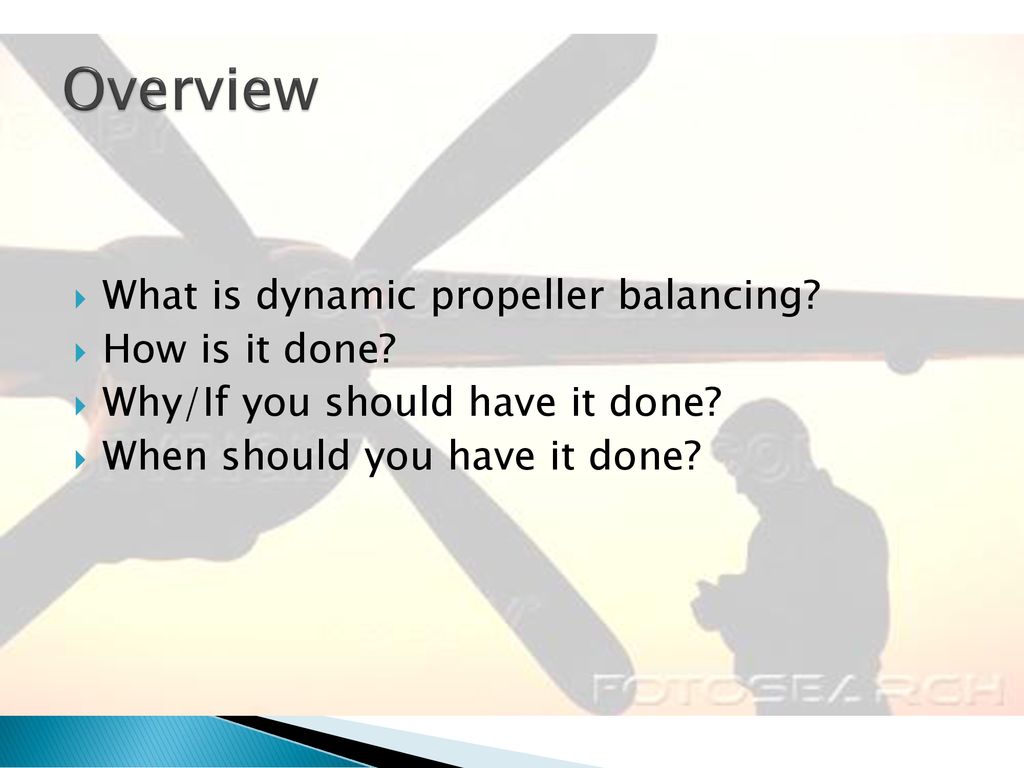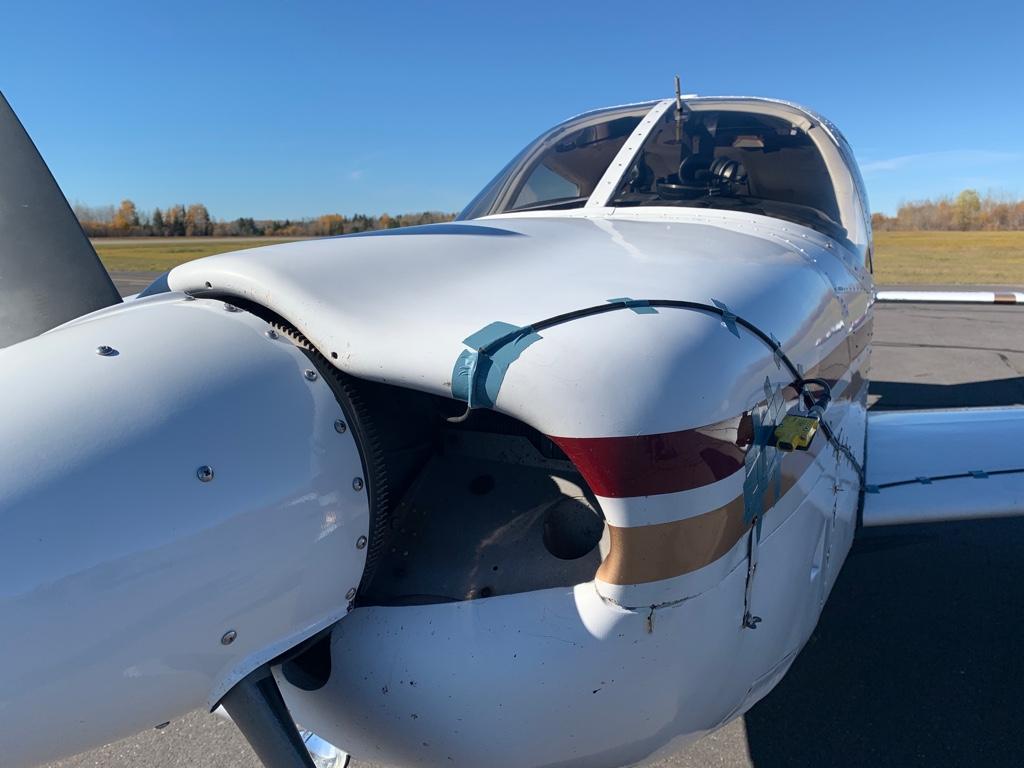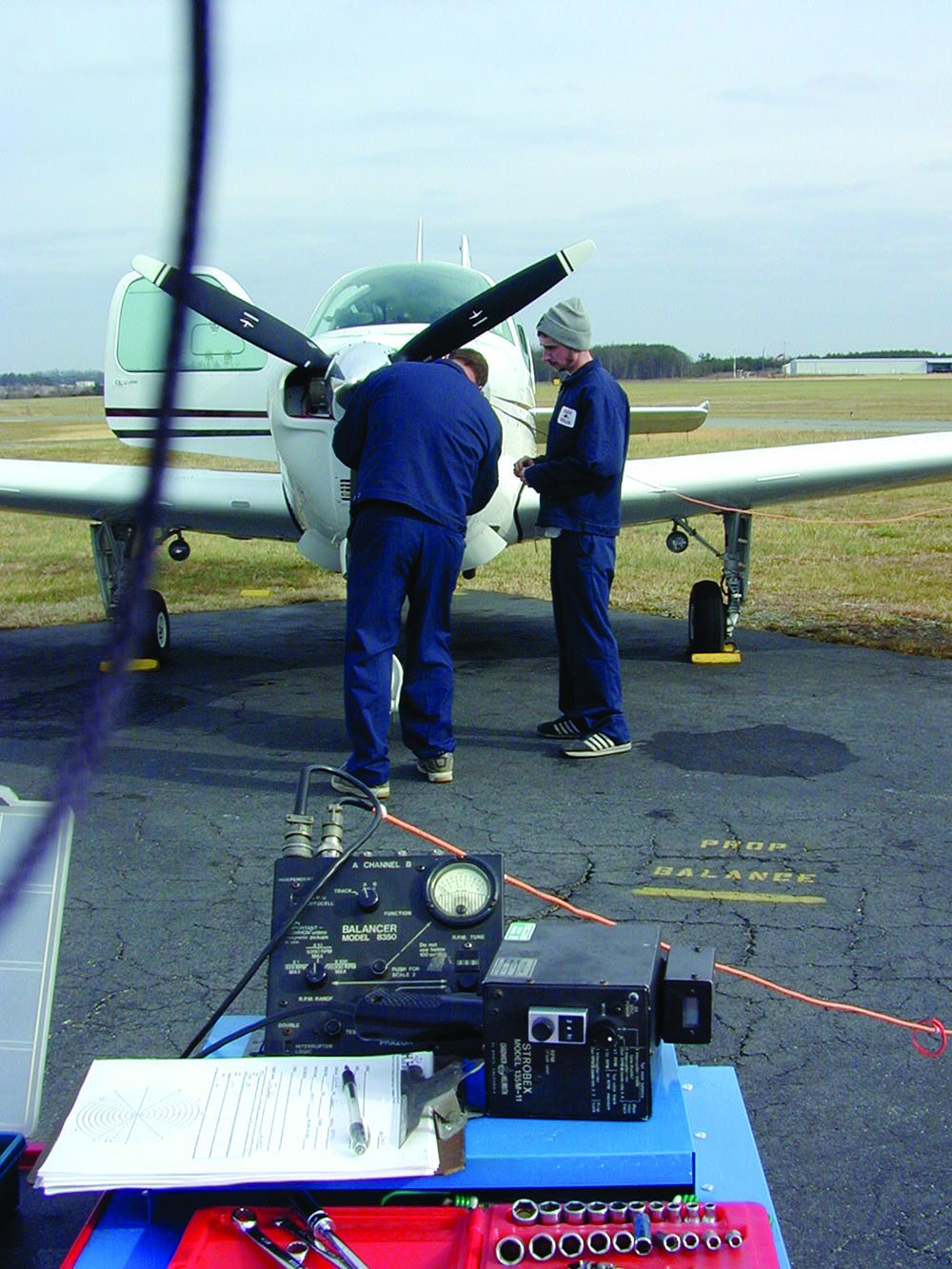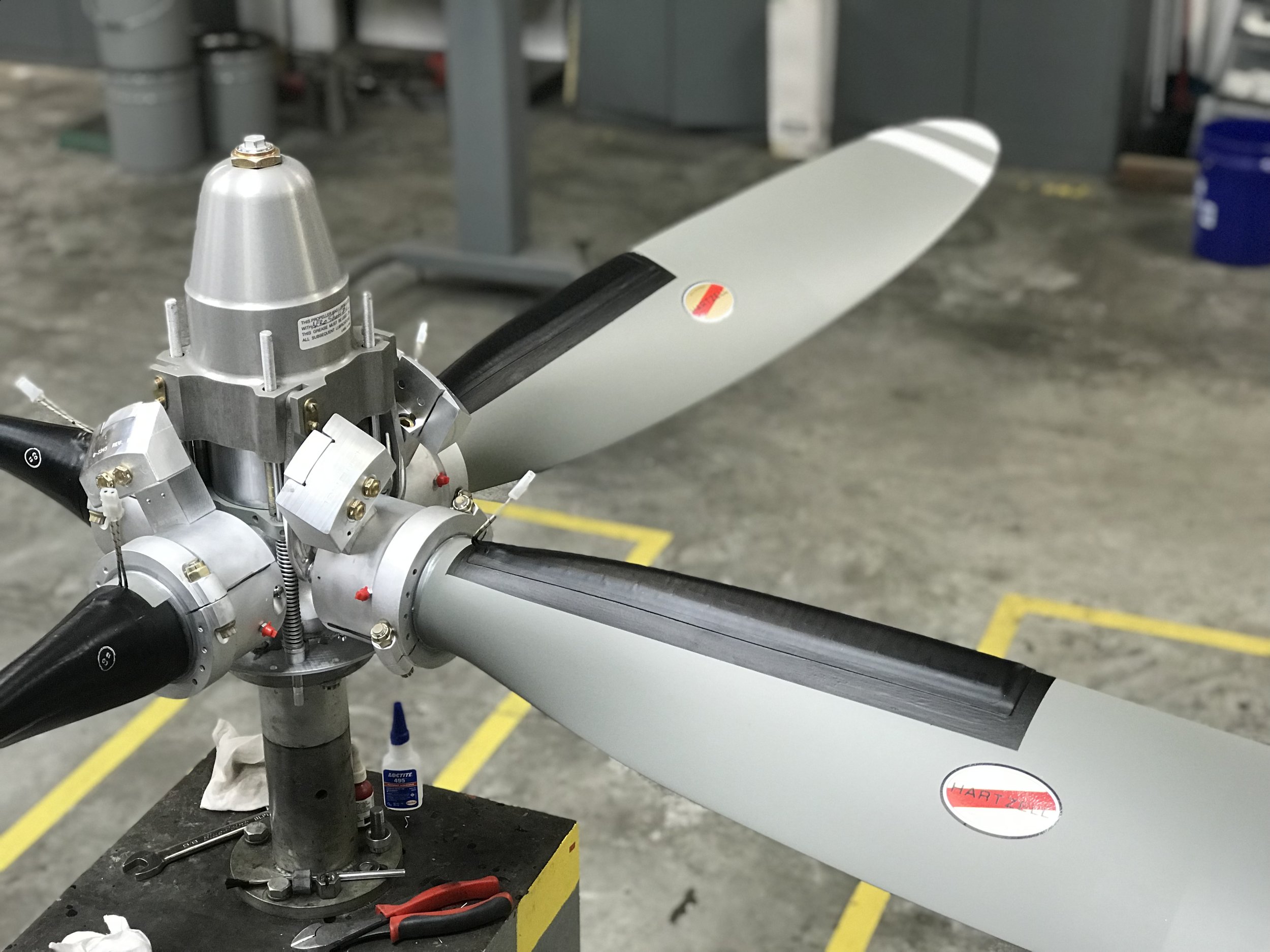Aircraft Propeller Balancing Near Me - Feeling tired when you fly (and tired when you land)? It can't be your nerves; But it can be a side effect of excessive shaking. Vibration can come from the aircraft's engine, propeller or spinner, and if left unchecked, can lead to other mechanical problems. Vibration can cause fatigue for the pilot and passengers. Fortunately, computerized dynamic propeller simulation is a cost-effective way to help reduce those vibrations.
Aircraft propellers are built to be strong, durable and able to absorb the stresses of flight. Depending on the model, propeller blades can weigh from a few ounces to several pounds. The rotational speed and aerodynamic loads placed on the propeller in flight make it susceptible to vibration if it has a slight imbalance.
Aircraft Propeller Balancing Near Me

Regardless of the origin, excessive tremors can cause many problems. Engine vibrations alone are designed to filter most of the vibrations from being transmitted to the airframe, but they don't eliminate them.
Balancing Propellers For Quadcopters & Other Rc Crafts
An out-of-balance propeller that causes the engine to vibrate in place will wear out the vibration isolator. Excessive vibration can cause cracks in the airframe. Cracks can appear in the cowl itself, as well as in the spinner or spinner bulkhead.
Vibration can cause a broken or loose connection to the outlet. As an example of the importance of balance when it comes to exhaust systems, Powerflow Exhaust manufacturers actually require a variable propeller balancer for their exhaust system to qualify for an extended warranty.
This is not complete. Vibration is harsh on engine components and can cause premature engine failure. In addition to creating mechanical issues, vibration is also a source of pilot stress and fatigue.
The frequency at which the vibration occurs gives a clue as to whether the vibration is coming from the propeller or the engine.
Solar Plane Aircraft Balancing Toy Black Propeller Kinetic Art Balance Toy Balancing Decompressive Science Home Office Toy For Desk Physics Toy Solar Car Decoration Wj155
Vibrations are calculated by the number of vibrations per revolution (of the propeller). They are called "two-each", "half-each" and so on. There is a certain vibration in the revolution of the propeller and this indicates the propeller itself, or in rare cases the crankshaft of the engine. Half-cycle vibration occurs every other propeller revolution and is usually caused by cylinder wear. Small vibrations that occur at a frequency greater than one revolution (two per hour or more) usually indicate a malfunction in bearing wear or an accessory such as an alternator.
As mentioned above, vibration can come from sources other than the propeller. The engine and engine mounts may be to blame.
A pressure imbalance or a cylinder with too little pressure can cause vibration. Excessive wear on the crankshaft counterweight can also cause vibration.

A worn engine vibration isolation allows for excessive vibration, and can allow the front of the engine to bend downward.
Battlelab Demonstrates New Propeller Balancing System > Air Force > Article Display
Spinners that have a hard surface due to manufacturing or maintenance defects can develop small imbalances that cause vibration. Placing the spinner on a flat table and rolling it slightly can sometimes reveal a hard spot on the spinner. If the spinner comes to rest with the same pitch down every time, he probably has a hard spot. A spinner with too many spaces can make it difficult to balance the dynamics of the propeller.
The front end of the spinner should be aligned with the center of rotation of the propeller. If the nose of the spinner appears to be moving as seen by an observer outside the aircraft while the engine is running, the spinner should be re-lined by loosening the mounting screws and re-tightening them as the spinner tightens. with
Cracked or broken spinner heads can cause the spinner to fail. If any defects are noticed it is a good idea to consider them carefully.
Propeller vibration is often caused by weight imbalance. Extreme imbalance occurs when the propeller's center of gravity is not in the same position as the propeller's center of rotation. This is usually due to the removal of material from the blades to repair nicks or different levels of blade erosion. Fortunately, this can often be corrected by measuring the propeller and checking the correct direction of the blade and the indicator.
Nz Civil Aircraft: One Design Prop Balancing At North Shore
Aircraft propellers are statically adjusted during manufacture and in the shop. Static balancing is the process of checking the weight of hubs and blades. This ensures that the propeller is not subject to any bending or bending forces due to the hard surface of one of the blades or hubs.
During static balance, the propeller is mounted on a mandrel that rests on low-friction bearings so that the propeller is free to rotate, requiring a minimum of energy to move it. (See photo 01, page 26.)
When the propeller turns slowly, it should land in the new position without backing up or continuing to turn. This process is similar to aligning a wheel assembly.

If there is an imbalance in the propeller or hub, the heavy area will cause the propeller to rotate so that the heavy area ends up on the ground.
Amazon.com: Goolsky Tru Spin Prop Balancer For Rc Helicopter Multirotor Airplane
Some shops mount the propeller in a horizontal plane on a shaft with the propeller mounted rigidly from the bottom of the shaft. (See photo 02, page 26.)
As the propeller is rotated, if the lower index of the shaft is inclined in one direction instead of maintaining a vertical position, the propeller has a difficult position.
Weight can be added or subtracted from the hub to statically balance most controllable propellers. (See photo 03, page 26.)
The static balance is first adjusted to the propeller assembly and adjusted properly after the propeller is fully assembled and painted. Propellers with icing ("hot props") are adjusted after all anti-icing boots are installed.
Smooth Out Your Ride
Once the propeller is statically balanced and installed in the aircraft, the trajectory of each blade must be checked. The blade track shows the path of each blade tip. In a perfect propeller, the tracks will be the same.
The track is checked by placing a solid object next to the propeller blade near the tip so that the propeller blade is free to rotate behind it, and by marking where the tip of each blade passes the object. There should be no more than 1/16 inch gap between tracks.
The aircraft must be held steady and the propeller must be pushed slowly from the engine as each blade is checked to remove the endplay from the engine thrust. A blade that is out of the way will cause an aerodynamic imbalance because its angle of attack will be different from the other blade or blades. Also, different blade tracks may indicate that the propeller has been damaged in some way

The propeller indicator shows the position on the crankshaft flange where the propeller is mounted. Engine and airframe manufacturers specify where the propeller should be mounted on the crankshaft flange and the No. 1 piston. Generally, on most small, two-wing, fixed-propeller aircraft, the propeller is fitted with a top blade aligned with a bolt hole in front of the vertical and forward-facing propeller. This corresponds directly to the 2 o'clock and 8 o'clock slots.
In Multirotor Aircraft Airplane Propeller Oem Blades Balancing Carbon Fiber Prop
There is no reason to guess that the indicator is correct. The maintenance manual for each aircraft model gives details on where to install the propeller on the flange. Propellers mounted in the wrong place on the flange can cause vibration.
Dynamic propeller balancing is the process of checking for vibration while the propeller is still in motion. The propeller is mounted on the engine and the engine is driven through its entire rpm range.
Dynamic balancing is done by using a vibration-detecting sensor installed on top of the engine, and a photo sensor is installed to have a clear view of the back of the propeller blades. The sensor sees a piece of reflective tape placed behind one of the blades every time it passes through the sensor's beam. (See figures 04 and 05, on page 28.)
The vibration sensor is an accelerometer that contains a crystal that detects the direction and amount of energy of each movement. The sensor is calibrated and reads power in inches per second (IPS). This information, along with the position of the reflective tape provided by the photo sensor, is transmitted to the analyzer.
Propeller Prop Balancer Rotor Blade Balance Stand Tool For Fpv Drone, Quadcopter, Multicopter, Rc Plane/airplane, Helicopter
The analyzer connected to both sensors collects information about the size and frequency of any vibration, accurately records the rpm and calculates the number and location of additional weights to correct the imbalance. (See photo 06, page 30.)
After the engine and propeller are running, a specified amount of mass is located at a specific location by the analyzer. Weights are added according to the propeller balance equipment manufacturer's instructions. Usually, the propeller is rotated by hand so that the light tape is attached to the photo sensor. The number of degrees displayed on the analyzer screen indicates the desired position
Aircraft propeller balancing, dynamic propeller balancing near me, aircraft propeller balancing equipment, aircraft propeller service near me, propeller balancing, aircraft propeller shop near me, aircraft propeller overhaul shops, aircraft propeller manufacturers, aircraft propeller services, aircraft propeller static balancing, propeller balancing equipment, dynamic propeller balancing equipment
0 Comments